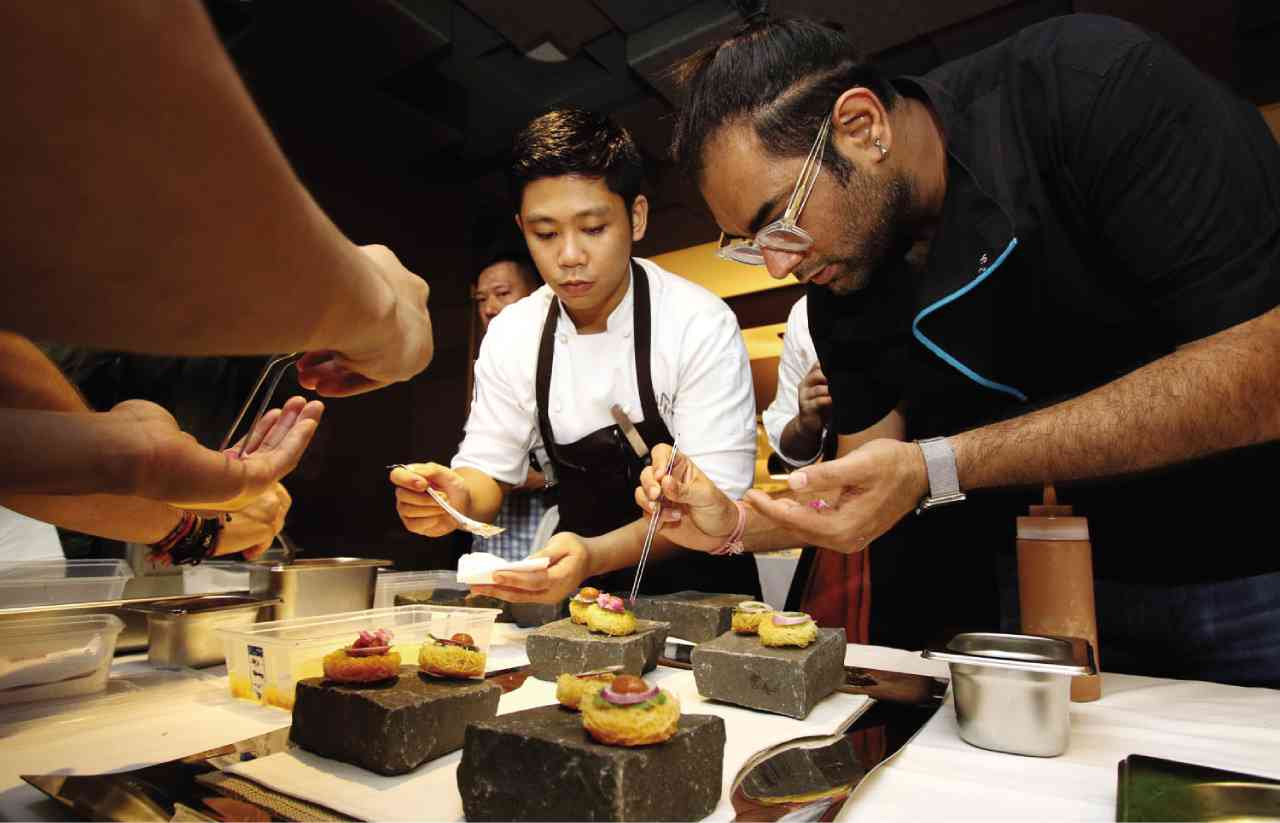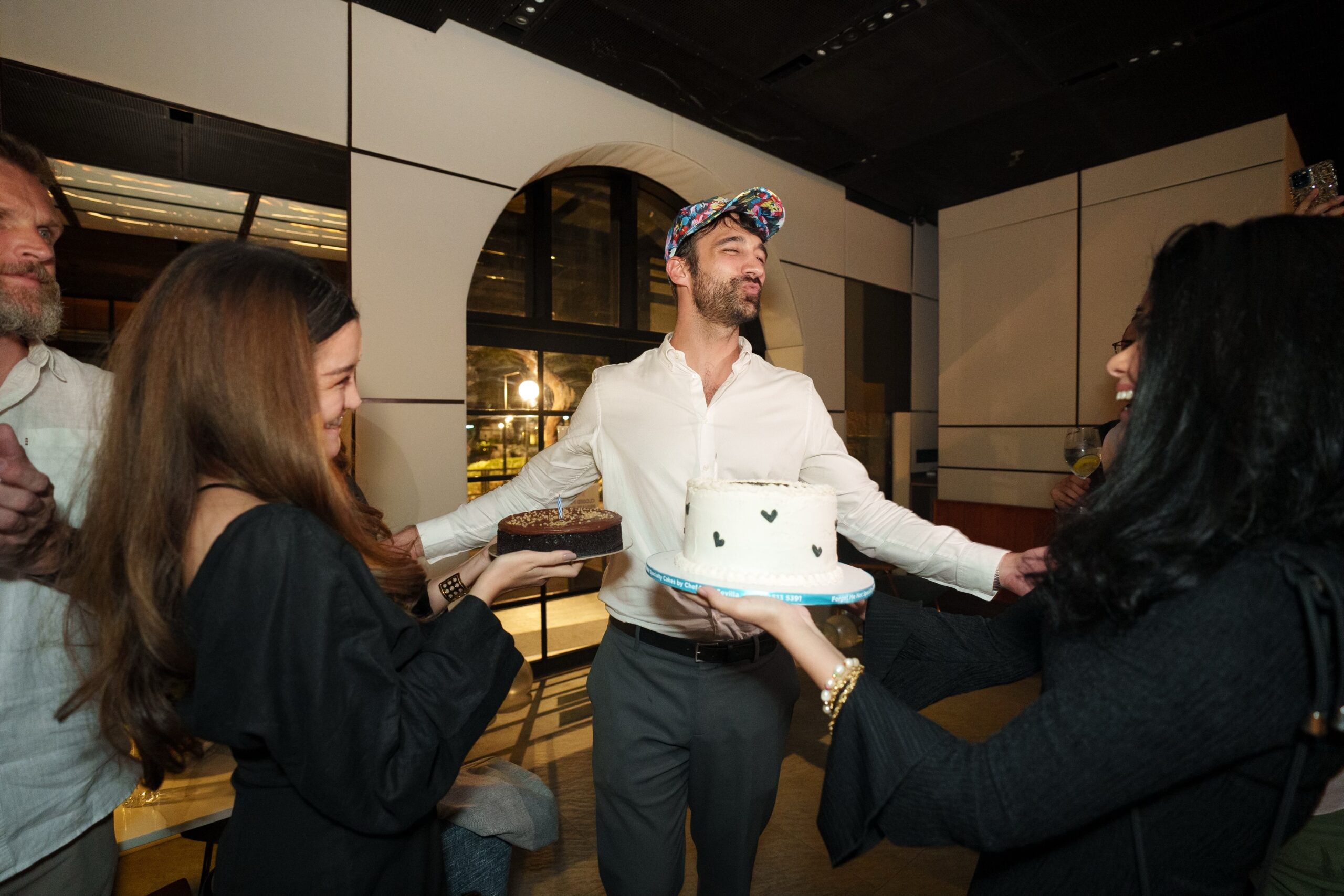There he was, the man of the hour, seated across the table with an earnest smile on his face. Chef Gaggan Anand—today’s hottest rock star among culinary artists—was in town recently for a special food event held at Gallery Vask in Bonifacio Global City.
The event, “Gaggan in Manila,” was a 15-course gastronomic spread that merged the culinary sensibilities of Indian and Filipino cooking.
Gaggan, whose eponymous restaurant has been named San Pellegrino’s No. 1 in Asia, said he works like a mad scientist. His molecular gastronomy kitchen looks like a science lab—with liquid nitrogen supplies, spherification and molecular tools, a sugar blowing pump, immersion circulator, dehydrators, siphons, edible film sealers, smokers and aromatizers, and many more.
With these tools, he can make bubbles, hot gels, frozen airs, sugar globes, oil chips, fluid gels, and can even convert fat into powder.
Once, upon learning at the eleventh hour that the kitchen ran out of coconut milk, he trained the staff how to improvise and make it.
‘You have to be mad’
Gaggan can turn an obscure, irrelevant grub into a culinary sensation. This is, after all, the man who gained international recognition by elevating Indian street food into fine-dining cuisine.
He calls this the progressive Indian cuisine—his culinary nod to his boyhood idols, the rock bands Pink Floyd and Deep Purple.
“Who would have thought that Indian food, which has not gone beyond fast-food or served restaurant-style, could become a hit nouvelle cuisine? You have to be clever, but passionate and mad—crazy even—to do something like that,” Gaggan said.
Born in Kolkata, India, and growing up in a 20-foot-wide apartment with his parents and siblings, he’s accustomed to eating street food.
“If I forget that and drive a Rolls-Royce and forget who I was, I won’t be me,” he pointed out.
He actually drives a custom-made, red BMW sports model —on installment, he quickly added—but doesn’t own a house. (He said he lives in his wife’s house.)
He flies business class, but only because he’s burly.
“I’m not flying business class for me,” he explained. “I’m doing that for the unfortunate people who will be seated next to me on the plane.”
Behind the fame and awards is apparently a funny, often self-deprecating man who said he travels only to cook in places where food needs to be promoted, and “not to promote me.”
It was not surprising, then, that Gaggan and his crew spent their first night scouring the streets of Manila for Pinoy street food.
“I love the Philippines,” he declared. “It’s amazing. It has great potential and is so underrated. You need to explore your own stuff, your own ingredients and street food. I was the first to push the boundaries in India. But then, I guess that makes me one in a billion.”
Only local produce
The next morning, he explored the market to get inspiration for his exclusive dinner menu.
When the fiery spices of India were wrapped inside a small, crispy cheese rice puff inspired by the Filipino breakfast staple “pan de sal,” a heady amalgam of flavors burst in the mouth.
It was an appetizer that would have packed a wallop of Indian heat, had it not been curbed by the Pinoy rice puff shell.
This was not simply fusion cuisine but rather “cross cultures”—an authentic melding of two different culinary temperaments and heritage.
For instance, the crowd favorite, Pinoy Cookie, was made of adobo powder (vinegar and garlic), with Bengali mustard that tasted like wasabi and was coated generously with a “cookie” made of seaweed.
“We come, we adapt, and we use only local produce,” said Gaggan. “These are all fantasy dishes. This is what cross cultures is all about.”
Arriving in Manila from Bangkok the day before the sold-out dinner set, he finalized the menu a mere 30 minutes before the first wave of guests began to trickle in.
“Longevity, I think, depends on how crazy you are,” he quipped. “It depends on how expressive you are with food. You have to be very, very spontaneous.”
The chef is a perfectionist. He admits a dish will never be served until it is perfect. It’s the madman in him, he said, that can improvise a recipe anywhere from two hours to two years.
Cheryl Tiu’s idea
Gaggan was in the Philippines on the invitation of Cheryl Tiu, the young woman who pioneered cross cultures in the country. It was an idea that struck her when she returned home from a trip in Ethiopia last June.
“I received messages,” recalled Tiu, “like, ‘What on earth are you doing there—charity work?’ ‘Please come home in one piece.’ ‘Is there even food there?’ ‘Isn’t it famine over there?’ And I realized there were many misconceptions about the place because it was so far away.”
Hence, the project Cross Cultures by Cheryl Tiu was born.
It aims to bring together chefs and cooks, countries and continents, to create awareness and dispel misconceptions, she said.
“You can tell a lot about the people through food,” she noted, “where they’re from, what they eat and how they eat it. Do they eat with utensils or hands? Plated or rationed, or sharing? Do men eat ahead of women, or together? There’s so much you can tell about a country’s culture and history just by the way they eat.”
Most expensive food
With just two events so far, Cross Cultures has become a hit in Manila.
At the dinner, ceviche—made of local tuna, corn and avocados in spicy Indian marinade— was essentially Indian food. But take away the tuna, Gaggan said, and it becomes all-Indian.
The wild forest was well-represented in Magic Mushroom —the mushrooms shaped into logs, with morels from Kashmir, and served with a pinch of spice.
“The most expensive food actually grows in the forest, like wild truffles,” said Gaggan. “This is inspired by that, how mushrooms grow on logs. Indians don’t know how to eat without spices, so we put spices here.”
Gaggan is a lot like his molecular gastronomy mentor, chef Ferran Adrià of the now defunct Michelin three-star El Bulli, who was reportedly losing 5 Euros per dish. Both cook for the love of food. Food is his cost, so he needs to make money elsewhere, like selling beverages thrice its price, Gaggan said, laughing.
Since he began earning recognition, his restaurant now has a two-month wait list. He is gunning for No. 1, though, and hopes to get a six-month wait list.
Does he feel the pressure of fame and glory?
“Some think I don’t deserve it,” he said. “And that’s all right. I think my mom is a better cook than I am. I know better cooks and chefs than me. Fame won’t last, but I’ll just keep doing what I want to do —express myself through food.”
Visit Cross Cultures by Cheryl Tiu at www.cheryltiu.com/.









































